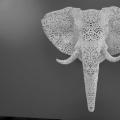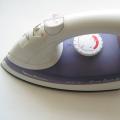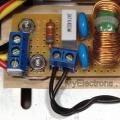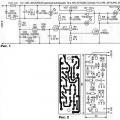Today we will tell you how to make an electronic thermometer from three parts with your own hands. 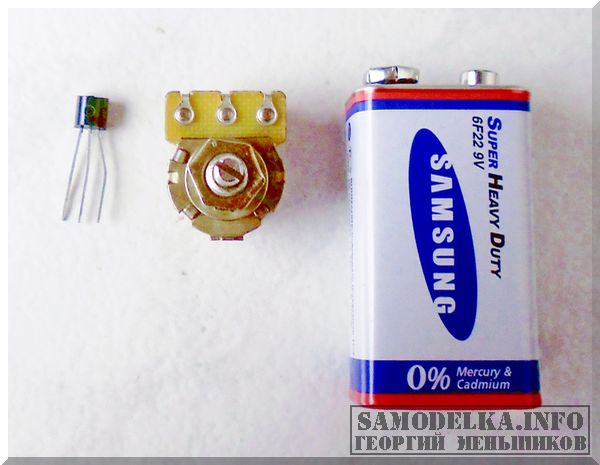 A very simple and fairly accurate thermometer can be made if you accidentally have an old dial ammeter with a 100 μA scale lying around.
A very simple and fairly accurate thermometer can be made if you accidentally have an old dial ammeter with a 100 μA scale lying around.
This requires only two details.  The temperature is measured by an LM 35 sensor. This integrated silicon element includes a temperature-sensitive element - a primary transducer and a signal processing circuit, made on a single crystal and enclosed in a package, such as, for example, in KT 502 (TO-92). The LM 35 sensor has a design version with the same parameters, but with a different base and heat sink, which is very convenient for contact temperature measurements.
The temperature is measured by an LM 35 sensor. This integrated silicon element includes a temperature-sensitive element - a primary transducer and a signal processing circuit, made on a single crystal and enclosed in a package, such as, for example, in KT 502 (TO-92). The LM 35 sensor has a design version with the same parameters, but with a different base and heat sink, which is very convenient for contact temperature measurements.
The output voltage of the LM 35 sensor is proportional to the Celsius scale (10mV / C). At a temperature of 25 degrees, this sensor has an output voltage of 250 mV, and at 100 degrees, an output voltage of 1.0 V.
The sensor designation is somewhat unusual. The pinout is shown in the figure. 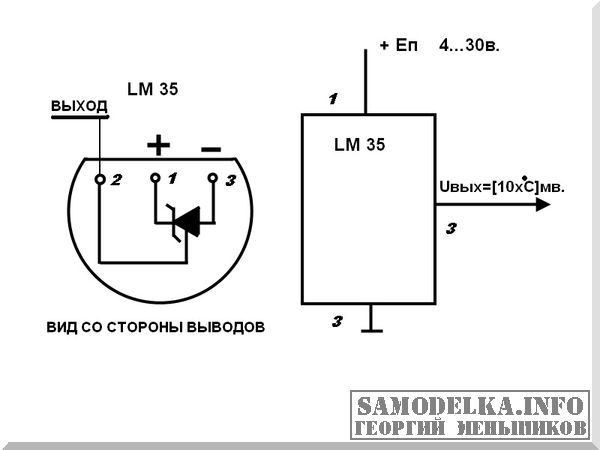 In the diagram, the sensor is depicted by a rectangle with the type designation of the device and the numbering of the terminals.
In the diagram, the sensor is depicted by a rectangle with the type designation of the device and the numbering of the terminals.
The thermometer is shown in the figure and is so simple that it does not require explanation.
The collected thermometer must be calibrated.
Turn on the circuit. Press the LM 35 sensor tightly against the reservoir of the mercury thermometer, for example with electrical tape, wrap the connection or simply put everything under a pillow. Since any thermal processes are inertial, you will have to wait half an hour or more for the temperatures of the sensor and the thermometer to equalize, then use the potentiometer to set the microammeter arrow to the figure corresponding to the temperature of the thermometer. That's all. The thermometer can be used. 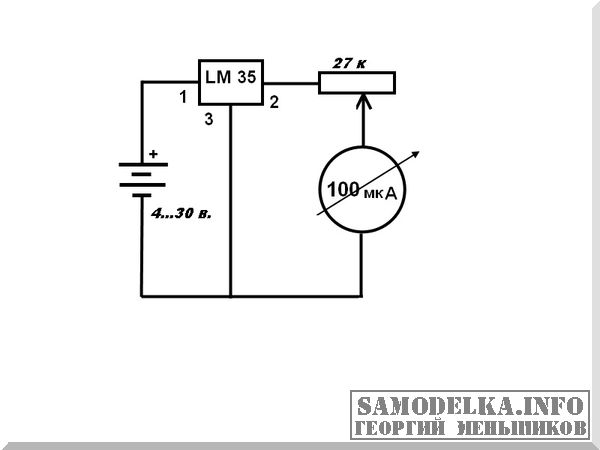 In the author's version, a thermometer from 0 to 50 degrees Celsius with a graduation of 0.1 degrees was used for calibration, so the thermometer turned out to be quite accurate.
In the author's version, a thermometer from 0 to 50 degrees Celsius with a graduation of 0.1 degrees was used for calibration, so the thermometer turned out to be quite accurate.
Unfortunately, finding such a thermometer is problematic. For a rough calibration, you can simply put the sensor next to a thermometer that measures, say, the temperature in the room, wait two hours and set the desired temperature on the microammeter scale.
If an accurate thermometer is still found, then instead of a dial gauge, you can use a digital multimeter, for example, a Chinese VT-308V, as an indicator, then the temperature readings can be read to tenths of a degree.
For those who want to get acquainted with integral sensors in detail, forgive the site kit-e.ru or rcl-radio.ru (look for LM 35).

